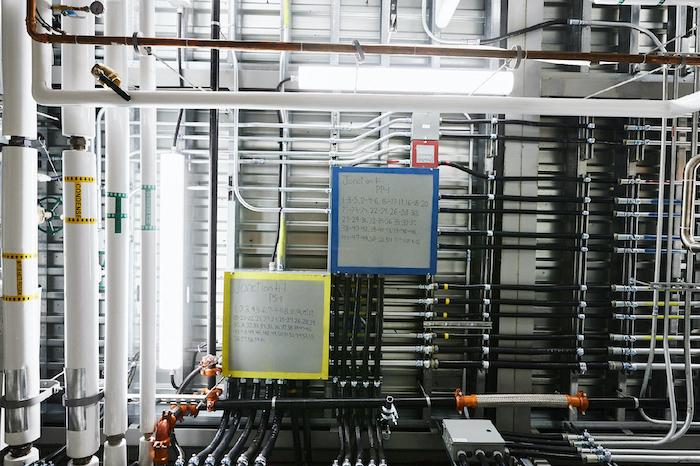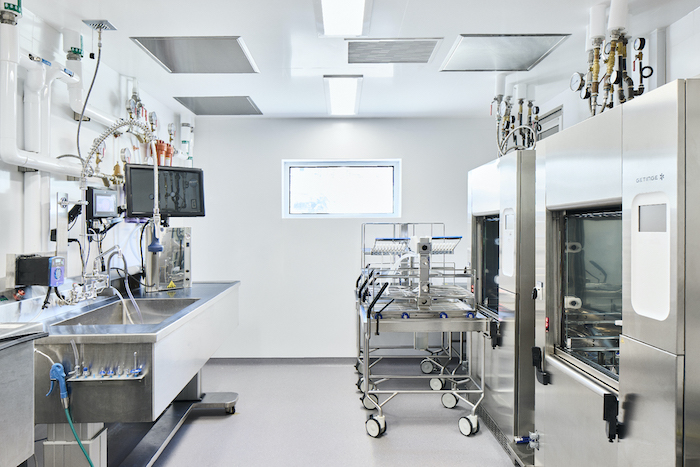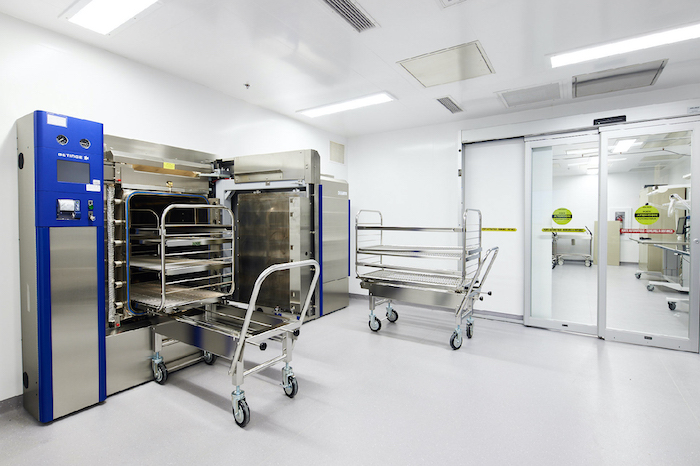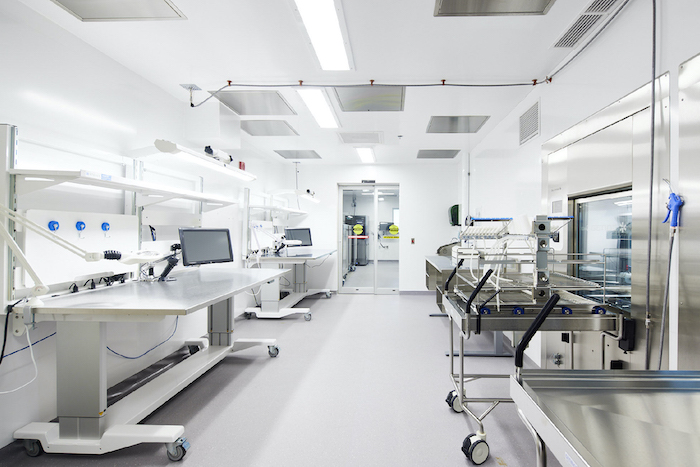
2022 #CCEawards Showcase: Unité de Stérilisation Mobile pour le CISSS des Laurentides
November 8, 2022
By CCE
“Quite valuable in making service more flexible and nimbler for hospitals.” – Jury
Category: Buildings
Award of Excellence Winner: gbi
Le Centre Intégré de Santé et de Services Sociaux (CISSS) des Laurentides selected gbi to design Quebec’s first mobile medical device reprocessing unit, a first in Quebec for such specialized equipment. The project included an installation at l’Hôpital de Mont-Laurier, followed by a move and an installation at l’Hôpital de Saint-Jérôme. This mobility made it possible to modernize two work environments while continuing to provide an essential service for the hospitals.
Flexibility and compatibility
The project involved fitting out sterilization equipment to increase capacity for hospitals that do not have enough space to house such equipment or while theirs is being repaired. The mandate included installing the mobile unité de retraitement des dispositifs médicaux (URDM) at two such hospitals.
It was necessary to ensure flexibility and compatibility for the building’s components. Flange joints were installed on the piping, at the intersection of each module, for protection during the move. Pure water and instrumentation air are produced inside the unit to current standards for quality and pressure, respectively.

The building’s shape required junction boxes with horizontal electrical conduits. Photo courtesy gbi
A ventilation unit was installed, capable of ensuring a high level of dehumidification and a high air-conditioning (A/C) load. Relative humidity is particularly important in a sterile area; if it rises above 60%, medical devices may need to be re-sterilized. And most medical appliances generate steam in large quantities.
The direction of the airflow was also an important issue. Its tightness had to allow the circulation of sterile to clean to dirty air. Therefore, the only connections to the building are for drainage, domestic water supply, steam and electricity with a general point provided for control and fire alarm.
Fire alarm panels are different for all hospitals, so a solution had to be found to connect to any building. The team decided to install an addressable alarm system with connection points to the existing building via addressable transmission and control modules, so the unit could connect to any panel in a flexible and mobile fashion. The independent control panel is supervised by a binary signal (general alarm), while the controller with display, also independent, is inside the unit.
Logistical challenges
Mobility posed the challenge of maximizing the use of space to fit all the components, including sterilizers, washer-decontaminators, an ultrasonic washer, the ventilation unit, the osmosis unit for pure water production and an instrumentation air unit. The unit also housed electromechanical systems and medical devices that could only be moved in the summer, to avoid freezing and condensation.
The number of modules had to be reduced to ensure the mobility of the unit, which is comparable to a 1,600 sf single-storey house. (In a hospital, a URDM usually occupies 2,500 to 3,000 sf.) The layout was designed to limit the piping and equipment having to cross the joints in the mechanical room.
Electrification also posed a logistical challenge. With part of the roof and a false ceiling being separate modules, the conduits could not run to junction boxes vertically. So, a horizontal band was reserved at the top. Each of the ducts stops before the vertical joint where a box is installed. This allows the wiring to be rolled up and limits access traps.
The optimal option
Given its location, the CISSS des Laurentides could not call upon a subcontractor for the sterilization of medical devices. The mobile unit offered a more economical solution than renting temporary, safe, suitable spaces for sterilization or bringing over a trailer from the U.S. with the same types of systems (and which would not necessarily be adapted to local operating methods).
The unit proved well-suited to the client’s needs, offering great benefits for the region’s hospitals during renovations or to increase their reprocessing capacity. A sterilization unit is essential for any hospital’s operating theatre; if it is not functional, the emergency room (ER) must be closed.
By calling on local suppliers, the project is keeping nearly $1.6 million within Quebec. With its flexibility and autonomy, the mobile URDM can be connected to any hospital for large-scale use. During the unit’s first stop in Mont-Laurier, by way of example, more than 10,000 medical devices were sterilized and reprocessed.
The unit’s components will probably be used for at least 15 years.
Unité de stérilisation mobile pour le CISSS des Laurentides, Mont-Laurier, Que.
Award-winning firm (mechanical/electrical engineer): gbi, Montreal (Alexandre Blain, P.Eng.; Alexandre Desmeules-Gagnon, P.Eng.; Sahar Benalem, P.Eng; Louis Mercier-Desjardins, CPI).
Owner: Centre intégré de santé et de services sociaux (CISSS) des Laurentides.
Other key players: CDLL Architectes (architecture), DWB Consultants (structural engineering), Getinge (washer-decontaminators and sterilizers), Class 1 (air compressor instrumentation), Spirax Sarco (vapour exchanger and components).


